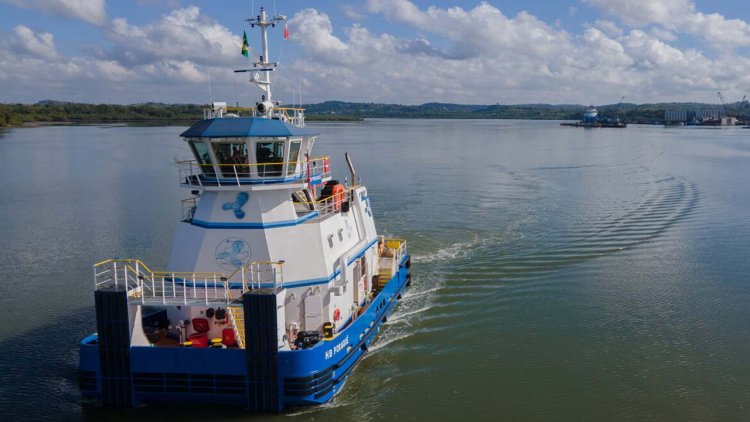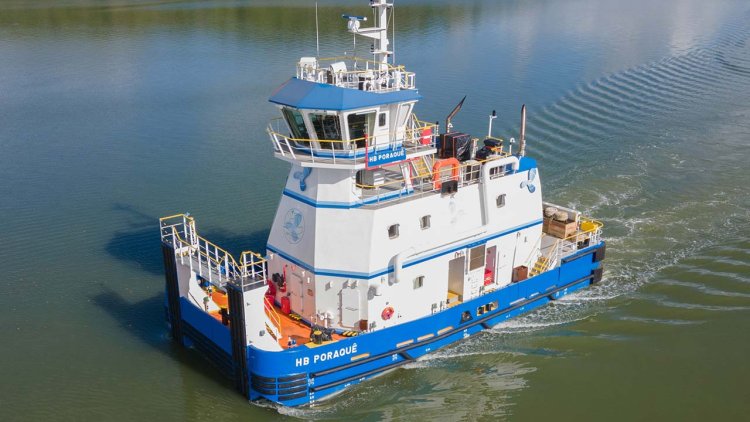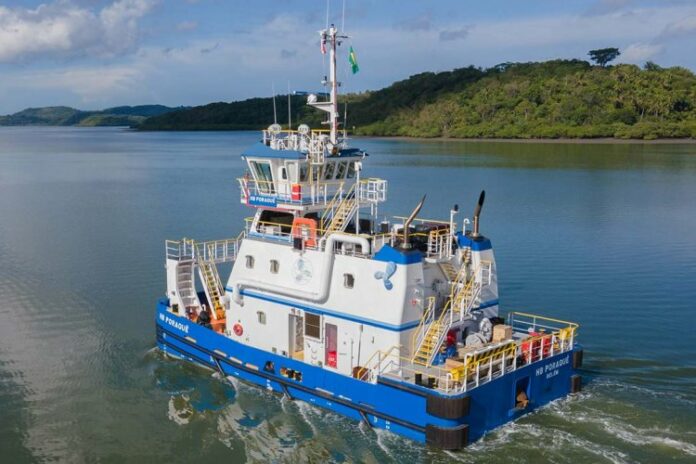Belov Engenharia Shipyard, located in Salvador, Brazil, has delivered the first Robert Allan Ltd. designed RApide 2000-E pushboat – HB Poraque. It is the first of two innovative battery/diesel electric vessels for Hidrovias do Brasil S.A., a leading South American logistics operator. The HB Poraque is the world’s first battery electric shallow draft pushboat.
The second vessel, the HB Enguia, is expected in May 2023. The vessels will provide terminal assistance in the Amazon River system and can perform their core operations purely on battery power.
The RApide 2000-E designs are fitted with a DC grid diesel-electric propulsion system, comprising two diesel generators, two L-drives and a large battery bank. The pushboat can operate in zero emissions mode and the 600 kWh batteries have sufficient endurance to perform its primary role, with the future expansion to 2000 kWh enabling secondary roles to also be performed with zero emissions. The two L-drive units each have an input power of 375 kW. The propulsion system is diesel-electric to improve efficiency when operating in multiple power modes.

The particulars of the RApide 2000-E are as follows:
Length overall: 20.4 m
Beam, moulded: 10.0 m
Depth, moulded: 3.2 m
Minimum operating draft: 2.2 m
Normal operating draft: 2.4 m
The vessel is certified as an inland navigating vessel by DNV Class Notation:
✠ 1A, (Z), IN(0.6), Pusher, Battery Power, Amazon / EO, BIS

The vessel’s accommodations are outfitted to MLC compliant standards for a crew of up to 10 personnel.
The propulsion system of the pushboat comprises a pair of Schottel SRP210L-FP thrusters, capable of being removed from above, powered by two permanent magnet electric motors. The entire electric system was designed, manufactured, and integrated by WEG, including the battery packs. Two Caterpillar C18 diesel generators provide redundancy and the capability to perform longer missions.



